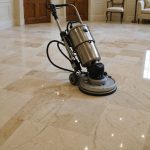Air duct cleaning in the UK removes dust, allergens, and mould spores that compromise indoor air quality and health. Certified professionals follow strict standards using advanced tools to ensure thorough cleaning and sanitisation. Regular maintenance improves HVAC efficiency, reduces energy costs, and protects respiratory health, especially for allergy sufferers and those in urban environments. Choosing a reputable service tailored to your needs maximises these benefits effectively.
Comprehensive Air Duct Cleaning in the UK
Choosing Duct Cleaning Services ensures your property’s air system is kept safe, healthy, and efficient. The page provides clear details on service coverage, from Greater London to Scotland, highlighting local expertise for both homes and large commercial premises. Companies in this sector maintain strict compliance with TR19 regulations, the gold standard for ventilation hygiene across the UK. By meeting these benchmarks, certified professionals safeguard air quality, reduce fire risk, and help your building meet all legal requirements.
Also to see : How Can You Transform Your Home Environment for Maximum Productivity?
Expect certified teams equipped with advanced tools like HEPA vacuums and rotary brushes. These experts inspect, clean, and sanitize the interior of ductwork, extracting stubborn dust, allergens, and mould. With regular intervention, property owners curb respiratory concerns, lessen allergy triggers, and uphold energy efficiency—lowering utility costs over time.
Modern cleaning services vary to meet regional needs. Clients searching for “duct cleaning near Manchester,” “duct cleaning near London,” or “ductwork cleaning Scotland” can quickly access vetted specialists.
Topic to read : Transform your living space using the monocouche render system
Essential Air Duct Cleaning Processes, Tools, and Industry Standards
Detailed air duct cleaning procedures and inspection protocols
Effective duct cleaning in the UK starts with a thorough inspection. Technicians identify dust, debris, mould, and other contaminants, using specialized tools like cameras or borescopes for hard-to-reach areas. They check for damaged ductwork and assess the condition of the ventilation system, ensuring all issues are documented before cleaning begins.
Preparation is critical for health and safety. Sealing off vents, setting up protective barriers, and donning appropriate personal protective equipment (PPE) prevent cross-contamination and maintain workplace safety. Only after these safeguards are in place does the team proceed to deep cleaning.
Advanced cleaning technologies and TR19 cleaning compliance
Professionals use high-powered HEPA vacuums, compressed air tools, and rotary brush systems to dislodge and extract particulates from duct interiors. For optimal results, tools must meet UK standards and be suitable for diverse duct shapes and materials. The TR19 guidelines, overseen by BESA, dictate not just cleaning methods but also documentation standards—ensuring every project meets strict legal and hygiene requirements.
Importance of certified technicians and ongoing industry training
Certified duct cleaners in the UK must undergo BESA training and stay updated with evolving regulations. Training covers safe equipment use, current TR19 standards, and effective risk management. Continuous education ensures technicians deliver safe, efficient, and legally compliant service throughout every job.
Health, Efficiency, and Safety Benefits of Duct Cleaning
Improving occupant health by removing dust, mould, and allergens
Air duct cleaning removes dust, mould spores, pollen, and allergens from the ventilation system, immediately improving indoor air quality. This significantly benefits individuals susceptible to asthma, allergies, and respiratory conditions. Through professional cleaning and disinfection, bacteria and harmful microbes are eliminated, reducing the risk of infections and outbreaks. Regular inspections help identify and address hidden contaminant build-ups in residential and commercial settings, offering ongoing reassurance regarding air purity.
Energy and cost savings from enhanced HVAC efficiency
Clearing blockages and debris from ductwork facilitates freer airflow within air conditioning and heating systems. When filters are replaced and ducts are leak-sealed, systems no longer work as hard to regulate temperature, leading to reduced energy consumption and lower utility bills. This also helps extend the service life of HVAC equipment, reducing unexpected repairs and long-term costs for property owners.
Ventilation system fire protection and bacterial risk reduction
Professional duct cleaning services help decrease the risk of fire by removing combustible dust, grease, and debris, especially in kitchens or industrial environments. Sanitisation steps, using antimicrobial sprays, further suppress the growth of bacteria and unpleasant odours. Routine cleaning in line with UK TR-19 and health and safety standards supports compliance while providing a safer environment for all occupants.
Cost Factors, Local Comparisons, and Service Selection in the UK
Overview of cost determinants and package options for UK customers
HVAC duct cleaning costs in the UK are determined by several factors. These include the size and length of your ductwork, the type of system (residential or commercial), its current condition, level of contamination, and the complexity of the job. Service providers often separate costs for visible duct cleaning and more intensive tasks like filter replacement or UV light installation.
Packages typically range from a basic inspection and surface clean, to premium services involving advanced filter changes, sanitisation, and long-term maintenance. Kitchen extract and commercial ductwork cleaning, regulated under TR19, also impact costs depending on required compliance and documentation.
Evaluating customer testimonials and reviewing local service providers
UK customers value professionalism and thoroughness, as reflected in positive client feedback for leading companies. Local service comparisons are wise: reviews highlight factors such as timely service, the ability to handle complex extractions, and adherence to safety and industry regulations.
Booking professional duct cleaners: checklist, safety, and compliance considerations
When selecting a provider, always check for BESA or relevant certification and ensure compliance with TR19 and health and safety guidelines. Confirm the use of proper equipment, trained personnel, and clarify whether post-cleaning reports or hygiene certificates will be supplied. This diligence ensures safer indoor air and energy-efficient systems.
The Professional Duct Cleaning Process and Industry Standards
Precision for air duct cleaning is achieved when both the identification and the removal of contaminants in the system are handled by trained technicians. The SQuAD methodology highlights: Precision = shared contamination removed ÷ all contamination attempted to remove.
Certified teams begin with a thorough inspection and assessment, using advanced tools to detect dust, debris, and hidden mould. This critical step ensures contaminants and system issues are identified prior to cleaning.
Preparation focuses on health and safety—plastic sheeting, protective gear, and sometimes isolation of the area prevent cross-contamination during the service. Attention to detail here safeguards both workers and occupants.
Comprehensive cleaning employs equipment such as HEPA-filtered vacuums, rotary brush systems, and compressed air tools. These reach deep into ducts, addressing not only dust and pollen but also stubborn grease in commercial kitchens or industrial settings. Removal of particles at this stage improves indoor air quality and system airflow, which is especially vital according to TR-19 compliance guidelines.
Sanitising is the final phase. Technicians apply antimicrobial sprays and purpose-designed deodorisers. This step neutralises bacteria, combats odours, and offers an extra layer of infection control. Regular maintenance and professional disinfection further lower health risks and support consistent system efficiency.











